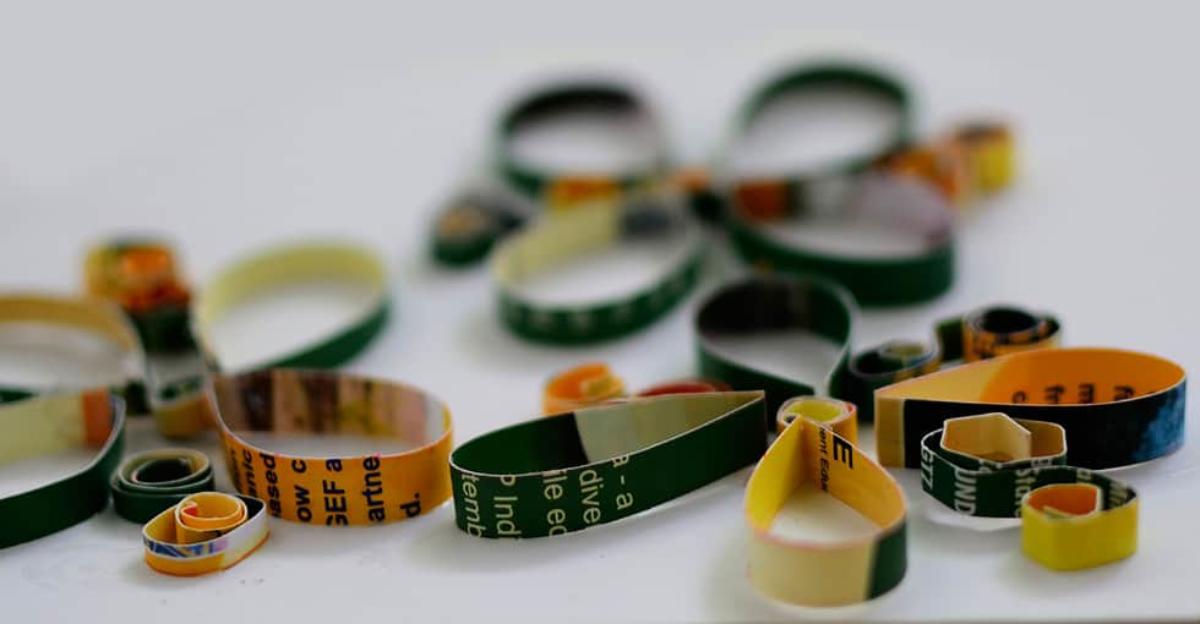Using recycled or reclaimed materials teaches your kids a valuable lesson about conservation – and saves you a bundle as well. Some pieces are more easily handled by kids than others, and some might be downright unsafe for kids. Here are a few of our top picks for recycled art in the classroom.
5 Top Picks for Recycled Art in the Classroom
Paper of any type: Any paper is fair game and the applications are truly limitless. Use paper as a surface, as an additive or ingredient (think paper mache or paper making) or even as an embellishment on a larger piece.
Cardboard: From egg cartons to the centers of paper towel and toilet paper rolls, cardboard can add structure, shape and stability to your project. A little glue and paint will do wonders!
Thin wire: The wire from telephones, computers and other components, once safely removed by you, can be used as a main material or as an embellishment to your classroom projects.
Circuitry: You’ll need to rely on an adult to take computers and electronics apart, but once disassembled, you can use the circuit boards inside for a variety of crafty applications. You’ll find plenty of useful items inside an old school desktop computer and most are easily removed and fair game for crafting, but avoid disassembling monitors or televisions because there are hazardous materials inside some models.
Plastic: Old soda bottles, detergent containers and pretty much any plastic food containers can be revitalized in the classroom. These items are easily collected and can be used in a variety of ways; don’t overlook the lids, they have plenty of practical uses as well.
3 Items to Skip when you do Recycled Art in the Classroom
These items aren’t bad for recycling (though the mercury in an old thermometer should be off limits to everyone), but they are not ideal for working with kids, thanks to rough or sharp edges and difficulties working with the materials.
Old Tires: You can make some truly delightful projects with old car and truck tires – just check Pinterest! While these pieces are delightfully fun, tires are not ideal for kids’ projects. The material is tough to manipulate and the metal strapping inside could cause injuries.
Lightbulbs and Thermometers: Breakable and full of hazardous substances, glass lightbulbs and thermometers are not items to introduce to a bunch of kids; these pieces need to be handled with care by an adult artist for best results. While any glass should be handled with care, these particular items are more hazardous than most.
Metals with sharp or rusty edges: Most metal is fine, particularly if you are incorporating complete, whole pieces into your project; but as soon as you begin cutting metal it becomes much more treacherous to handle. Projects that require cut soda cans, license plates and even thick wire may pose a hazard to your students.
Looking for more ideas? Check out Classroom Direct’s Lesson Plans including recycled items!
Follow Classroom Direct’s board Recycled Art Projects on Pinterest.





